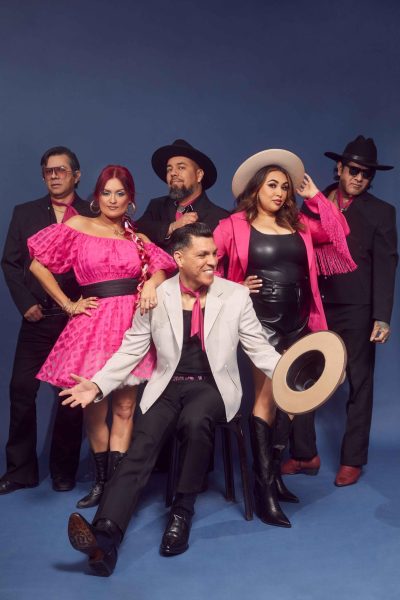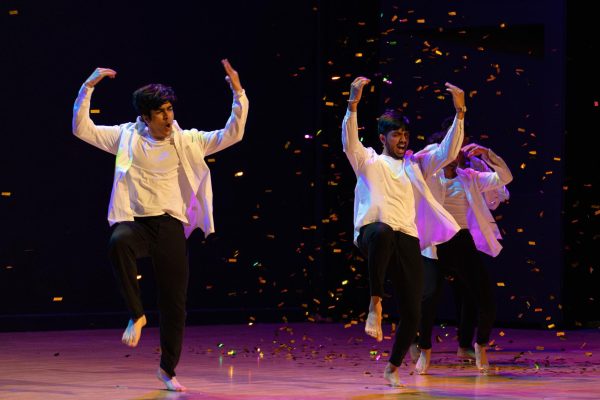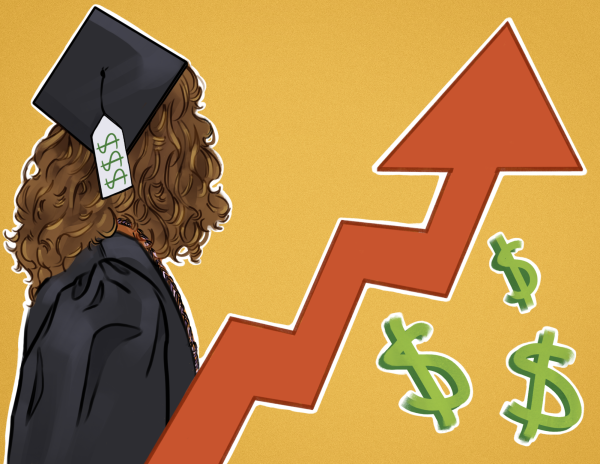OSU celebrated Day of the Dead
November 4, 2016
OSU students gathered on Wednesday to celebrate the holiday of Day of The Dead on campus.
The evening observance of the holiday took place at Native American Longhouse. Festivities included food, face painting, sugar skull decoration and a performance by traditional Aztec dancers.
Day of the Dead, or as it is also known, Dia de los Muertos is an internationally recognized holiday celebrated primarily in Mexico and the United States. The multi-day holiday places emphasis on remembrance and prayer for family and loved ones who have passed away.
“I think Day of the Dead is a perfect example of my culture,” said Alejandro Saucedo, the communications representative at the Centro Cultural César Chávez. “It is the perfect example of Spanish and European influences as well as indigenous beliefs, so Day of the Dead encompasses this and that is something I resonate with.”
Despite Day of the Dead being a holiday of mourning it does not have a solemn atmosphere surrounding it as one would expect. Instead one is supposed to celebrate the life of the deceased and reconnect with their spirit, according to Saucedo.
“I grew up here so when I first went to Mexico two years ago I was expecting it to be very depressing but, it is very uplifting, it is very spiritual in a very good way,” Saucedo said. “You don’t feel sad about it, it is a day of celebration and is something you are going to have to get used to.”
The night started off with a performance by traditional Mexica dance group: the MexicaTiahui Aztec Dance Group. This group is the only traditional indigenous Aztec dance group in Oregon. In addition to dancing, the group also teaches about the traditional customs, culture and philosophy of the indigenous people of Mexico.
One of the captains of the MexicaTiahui, Jose Carlos spoke before the performance in the packed main room of the Native American Longhouse. Dressed in traditional Concheros dress, he addressed the crowd speaking on the significance of the dance in indigenous culture.
“There is an effort by people to bring back pre-hispanic celebration and we are part of that,” Carlos said. “We are recovering and practicing their value system, understanding how our ancestors may have viewed the world.
The ceremony begins with one member of the group beats out a rhythm on a drum while the other members dance around the main altar in the center of the group. This altar represents the main elements necessary for life: water, air, earth and fire. One thing that makes the performance particularly unique is the rattling ankle bracelets worn by the dancers that are made from hollowed out nuts that provide a rhythm on their own.
After the performance attendees of the event were able to enjoy a traditional Day of the Dead food pan de muerto, or dead bread. The sweet roll is significant on the holiday due to the rough cross design across the top of the pastry which represents the bones of the departed. In addition to the pan de muerto there were other Mexican sweet breads and champurrado, or as it is also known, Mexican hot chocolate.
In addition to the food, there was sugar skull painting and face painting in the style of sugar skulls. People in attendance were encouraged to come with face paint and dress for the chance to receive the prize of Mexican sweets. One of those that dressed up was Anesat León-Guerrero the Associated Student of Oregon State University director of diversity programs. She spoke on the traditional celebrations for the holiday and its significance.
“Dia de los Muertos is actually two days combined—November first is the Day of the Dead but it is the day where only children, infants and innocent are celebrated. November second is for everybody…In the United States the one where they do more of a celebration is one the second (day),” León-Guerrero said.
León-Guerrero also associatesthe Day of the Dead with her ancestry, culture and synchronism of traditional and modern beliefs. The event was a good representation of this with both the performance by the Aztec dancers and the presence of the more modern practices of the holiday, she said.
“The one thing people mistake is that it is the Mexican Halloween,” León-Guerrero said. “There is a much more significant, meaning and tradition tied into Dia de los Muertos.”
For more information regarding Dia de los Muertos celebrations, visit the Centro Cultural César Chávez.























































































































